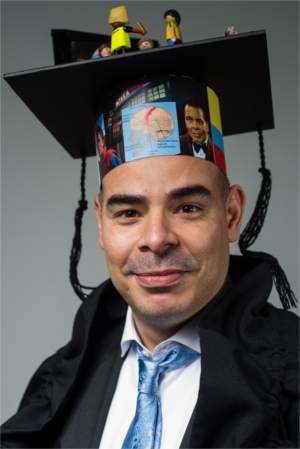Juan Rafael Orozco-Arroyave
Analysis of speech of people with Parkinson’s disease
Abstract
The analysis of speech of people with Parkinson’s disease is an interesting and highly relevant topic that has been addressed in the research community during several years.
There are important contributions of this topic considering perceptual and/or semi-automatic analyses. Those contributions are mainly based on detailed observations performed by clinicians; however, the automatic analysis of signals allowed by the rapid development of technological and mathematical tools, has motivated the research community to work on the development of computational tools to perform automatic analysis of speech.
There are also several contributions on this topic; however, most of them are focused on sustained phonation of vowels and only consider recordings of one language. This thesis addresses two problems considering recordings of sustained phonations of vowels and continuous speech signals: (1) the automatic classification of Parkinson’s patients vs healthy speakers, and (2) the prediction of the neurological state of the patients according to the motor section of the Unified Parkinson’s Disease Rating Scale (UPDRS).
The classification experiments are performed with recordings of three languages: Spanish, German, and Czech. German and Czech data were provided by other researchers, and Spanish data were recorded in Medellín, Colombia, during the development of this work. The analyses performed upon the recordings are divided into three speech dimensions: phonation, articulation, and prosody.
Several classical approaches to assess the three speech dimensions are tested, and additionally a new method to model articulation deficits of Parkinson’s patients is proposed. This new articulation modeling approach shows to be more accurate and robust than others to discriminate between Parkinson’s patients and healthy speakers in the three considered languages. Additionally, the articulation and phonation seem to be the most suitable speech dimensions to predict the neurological state of the patients.
